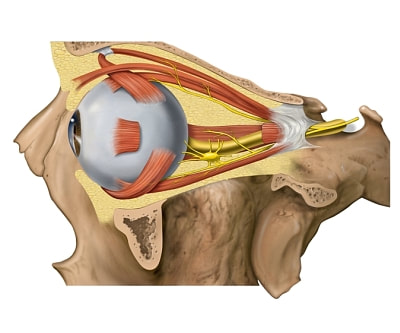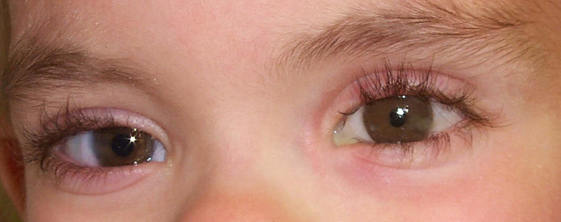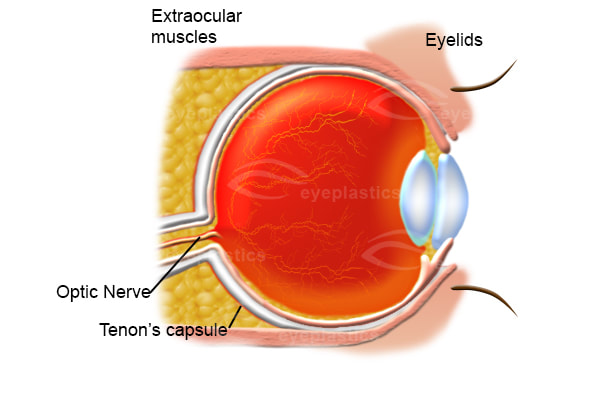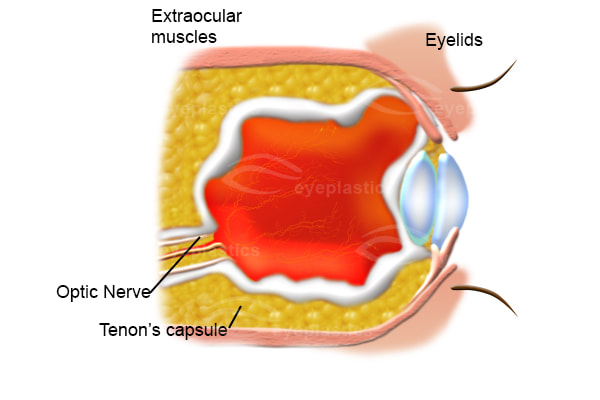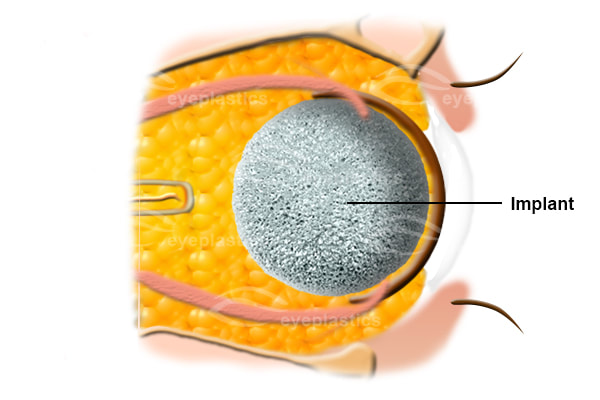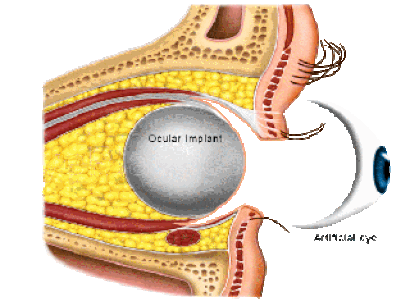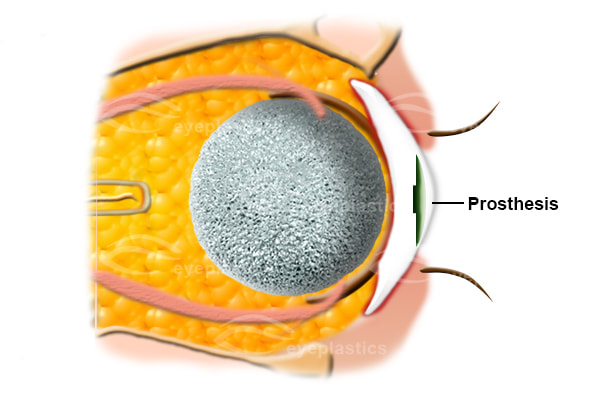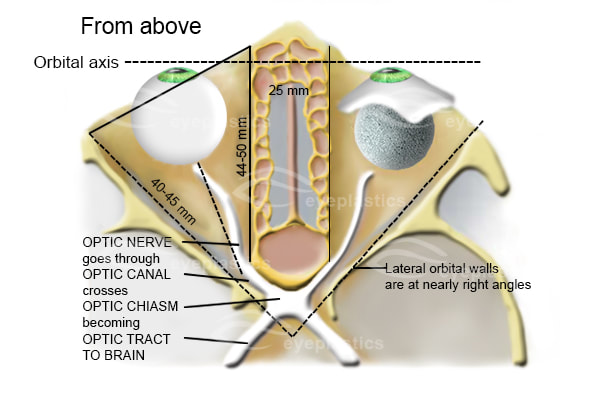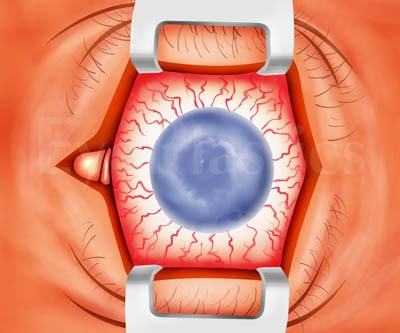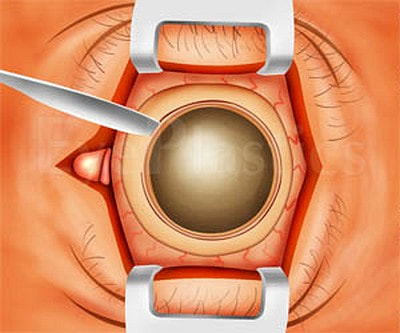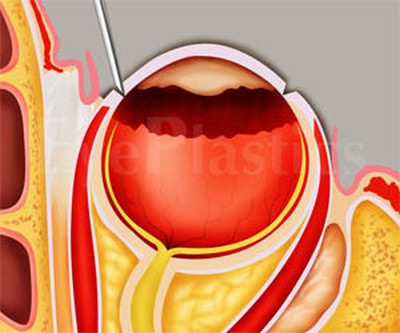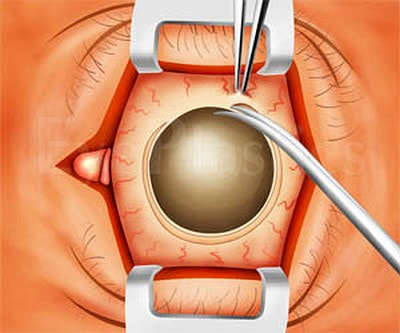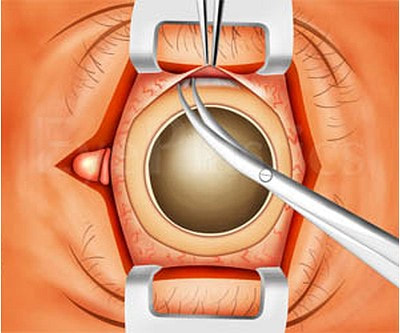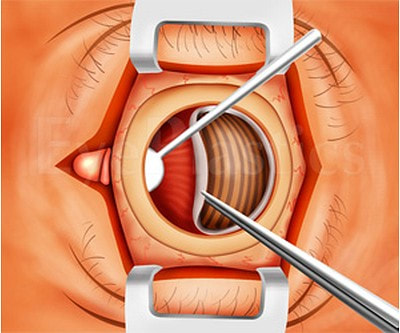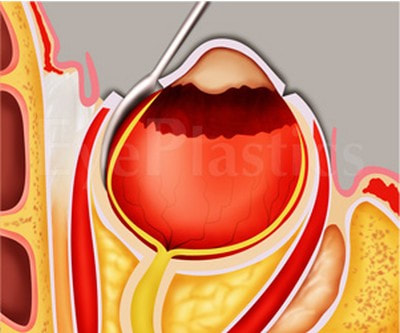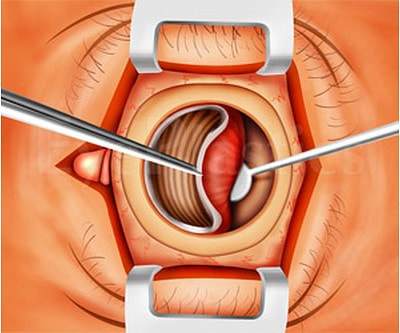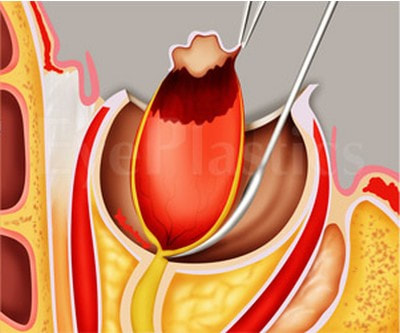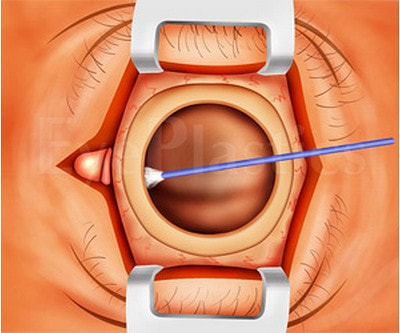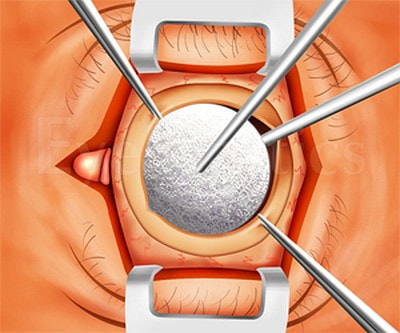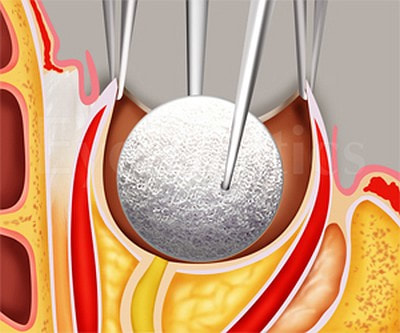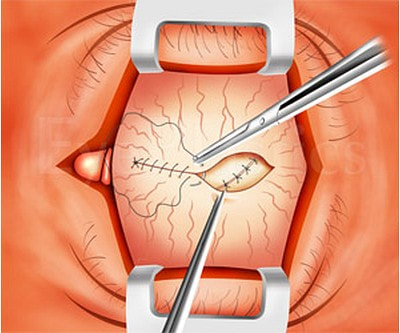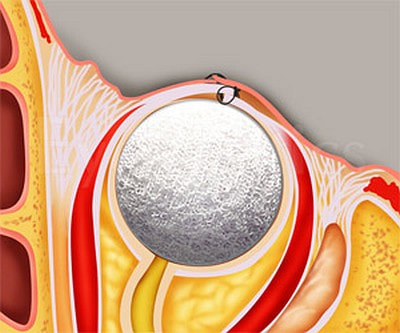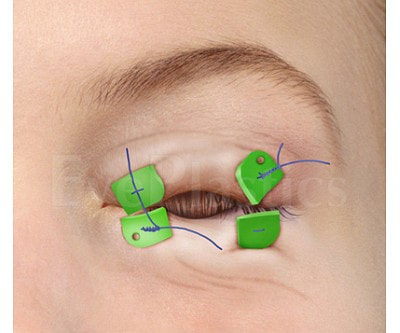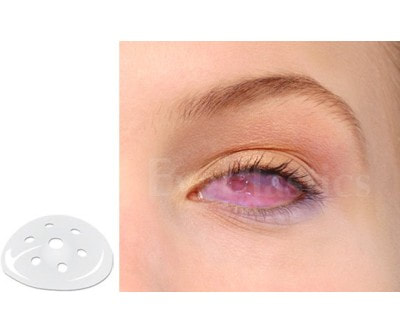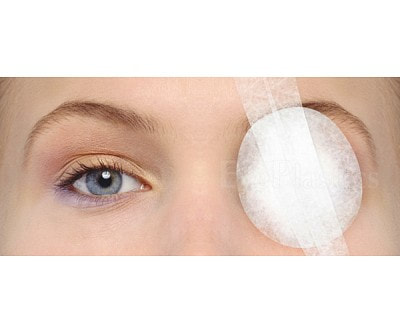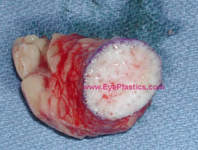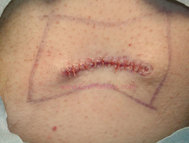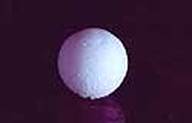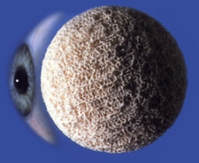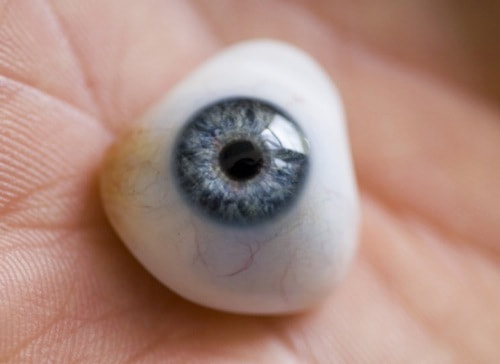Enucleation
"Well, the last time I had a picture taken I could hardly see my eyes because of the weight of heavy eyelid. Then I paid attention to how I was actually using my eyes and I really noticed when I was looking at anything especially the computer I was straining my forehead to see better. Since I have had it done I no longer have to lift the forehead and tilt my head to see. It is amazing! I love..." D. Rock 63 Yrs Old with Fat Droopy Eyes - Salt Lake City, UT
Evisceration
Evisceration is the removal of the contents of the eye whilst leaving the scleral lining with the muscle attached intact:
What types of implants are placed in the orbit?
Historically, implants have been made of many materials: magnets, gold, silver, glass, silicone, cartilage, bone, fat, cork, titanium mesh, acrylics, wool, rubber, catgut, peat, agar, polyethylene, hydroxyapatite.
The modern options include the following:
MEDPOR®
MEDPOR® is comprised of a lightweight, porous form of high-density polyethylene, a material with a long history of medical applications. Its unique, highly porous texture allows vessels to incorporate into the enhancement shape, integrating MEDPOR®
into a patient's tissues. The shape and size can be customized by your surgeon to fit your individual needs. MEDPOR® eliminates the need for grafts or silicone implants.
MEDPOR® Orbital Spheres
The modern options include the following:
MEDPOR®
MEDPOR® is comprised of a lightweight, porous form of high-density polyethylene, a material with a long history of medical applications. Its unique, highly porous texture allows vessels to incorporate into the enhancement shape, integrating MEDPOR®
into a patient's tissues. The shape and size can be customized by your surgeon to fit your individual needs. MEDPOR® eliminates the need for grafts or silicone implants.
MEDPOR® Orbital Spheres

We select from sphere implant diameters of 18 mm to 22 mm.
A resterilizable sizer set is available for selecting the appropriate implant diameter at the time of surgery.
A resterilizable sizer set is available for selecting the appropriate implant diameter at the time of surgery.
Hydroxyapatite:
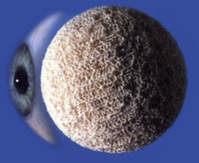
- The Bio-eye hydroxyapatite (HA) ocular implant is a spherical (ball-shaped) implant composed of natural coralline HA.
- It is used to replace the volume of the orbit when the eye is surgically removed, or as a replacement implant in patients with a poorly functioning, pre-existing implant.
- Historically, the use of nonporous synthetic ocular implants has led to complications such as exposure, extrusion, migration, infection, poor motility, and poor cosmesis
Dermis-fat graft
- is composed of subcutaneous fat and overlying dermis.
- Its advantages include the fact that it is an autologous graft and, thus, lacks concerns for bio-compatibility in disease transmission. However, there is a certain degree of fat atrophy which might possibly occur leading to somewhat unpredictive and result of volume.
- Dermis fat graft might possibly be used as a primary procedure following primary reconstruction for orbital exenteration, as a low cost means to provide an orbital implant and in instances in which enucleation is performed early in childhood since the fat might possibly grow and provide stimulus for orbital growth.
- Dermis fat graft can also be used in numerous secondary procedures such as a replacement of an extruded orbital implant and correction of deep superior sulcus deformity.
- The surgeon might possibly choose one of several donor sites including the lower abdominal quadrant and the outer
- quadrant of the buttock.
- Typically a graft is measured approximately 25 mm in diameter. The epidermis might possibly be abraded with the derma-brader or with a #15 blade.
- The graft is harvested with an attempt to minimize mechanical manipulation of the graft and to quickly insert the graft into the previously prepared recipient bed.
- Often the dermis has slight surgical modifications in order to create a dome shape to it which often provides better motility for the prosthetic implant.
Schedule Your Consult Today |
"I had a excellent eye lift done by Dr. Patel. He knows what he is doing and is very pleasant. Dr.Patel was easy to get an appointment and he works with you. The office staff was very pleasant and made you feel calm." D. Gull Highly recommended for eye lift surgery - Salt Lake City, UT
|
Visit Patel Plastic Surgery on YouTube for more free tips!
Stay Connected With Us On Social Media
|
Find UsLocations:
Dr. BCK Patel MD, FRCS 1025E 3300S Salt Lake City, Utah 84106, USA (801) 413-3599 (phone/text) E: [email protected] bckpatel.info --------------------------------------- Dr. BCK Patel MD, FRCS 585 E Riverside Dr Suite 201 Saint George, UT 84790 (435) 215-0014 E: [email protected] Quick-Link |
Let Us answer your questions |

